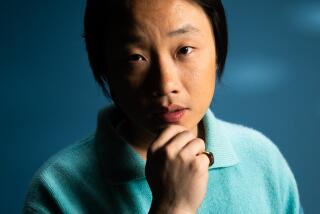A talk with Bonnie Tsui, writer of ‘American Chinatown’
Beyond their kitschy, noisy facades, American Chinatowns are more than a place to find a counterfeit Kate Spade bag, cheap dim sum and tacky souvenirs.
For hundreds of thousands of people, Chinatown is home. In “American Chinatown: A People’s History of Five Neighborhoods,” author Bonnie Tsui immerses herself in some of these communities, exploring their class struggles, rivalries, customs and dialects.
“What was most surprising to learn was how little things have changed,” she said by phone, “because it’s still where new working-class immigrants go because they don’t have anywhere else to go. That’s a small comfort when you’re making your way in a completely unfamiliar place.”
Born to Cantonese parents in Queens, N.Y., Tsui grew up on Long Island in the early 1980s, where her family moved in search of better schools. Six years ago, Tsui moved to San Francisco, which boasts the country’s oldest Chinatown (dating to the mid-19th century), one of the five neighborhoods she chronicles -- along with those in Manhattan, Las Vegas, Honolulu and Los Angeles (the third-largest in the U.S.). As the author discovered, each one is different, with its own rich identity.
What inspired Tsui to write this book? “Personal geography,” she said. Her mother’s immigrant family got its start in Manhattan’s Chinatown, where her grandfather worked in a fortune cookie factory, and the family went to Chinatown often for shopping trips and important gatherings, such as wedding banquets and christenings.
Tsui fondly described the fortune cookies in her childhood home as “little reminders of my grandfather’s path down to Chinatown every day -- kind of like Hansel and Gretel.”
Through reportage and research, her book examines how each of these neighborhoods came to be and how their identities have evolved. (Particularly interesting is the section covering the quirky Las Vegas Chinatown, which was built in a shopping mall in the mid-1990s by a local developer.)
In Los Angeles, Tsui learned how intertwined Hollywood and Chinatown had been historically. From the 1920s to the 1950s, industry types went there to cast Asian extras in their films. “They assumed that all these people would speak Chinese or would speak in broken English,” Tsui said.
She pointed out that many of those seen toiling as Chinese peasants in the background of Hollywood movies were American born and bred, and they had to fake Chinese accents for small speaking roles.
“I thought that was hilarious,” she said, “because it spoke to such a misunderstanding of how long the Chinese had been in America, even at that stage.”
Tsui also discovered that L.A.’s Chinatown has had various permutations: The first was razed in 1933 to make way for the building of Union Station. (Built in 1890, the Garnier Building -- across the street from the station -- is the last remaining structure from the original district.) Five years later, competing Chinatowns emerged: New Chinatown, founded by a Chinese community group, and the dazzling China City, led by an American woman who “got sets from Hollywood movies like ‘The Good Earth’ to be a part of the physical architecture, and rickshaw rides, and things like Chinaburgers,” said Tsui, laughing. “And she dressed up the locals in what she thought was appropriate attire for Chinatown residents.
“It was amazing to me that the film industry had such a huge role in creating the space where people actually lived.”
China City burned down twice -- it’s now a parking lot -- and ultimately New Chinatown prevailed as an authentic city neighborhood. (Tsui has her favorite local spots, including the Taoist Chua Thien Hau Temple at 750 Yale St., and the Chinese American Museum in the Garnier Building, which features a reproduction of an old Chinese pharmacy.)
Like other major Chinatowns in this country, L.A.’s version has its share of problems, including gangs and poverty -- but it also has art galleries, bookstores and the thriving First Chinese Baptist Church, in which about 2,000 people unite each Sunday to pray. And despite being more enticing for tourists than locals, the city’s Chinatown is still a neighborhood where “longtime connections and trusted relationships carry weight across generations,” Tsui writes. “Everybody knows somebody, and that somebody knows you.”
Ciuraru is a critic and the editor of several poetry anthologies, including, most recently, “Poems About Horses.”
More to Read
The biggest entertainment stories
Get our big stories about Hollywood, film, television, music, arts, culture and more right in your inbox as soon as they publish.
You may occasionally receive promotional content from the Los Angeles Times.










